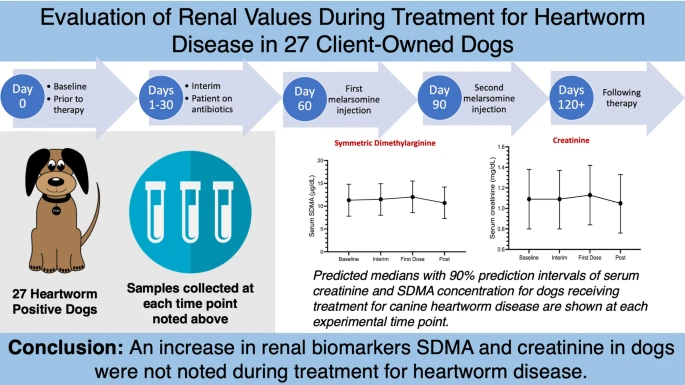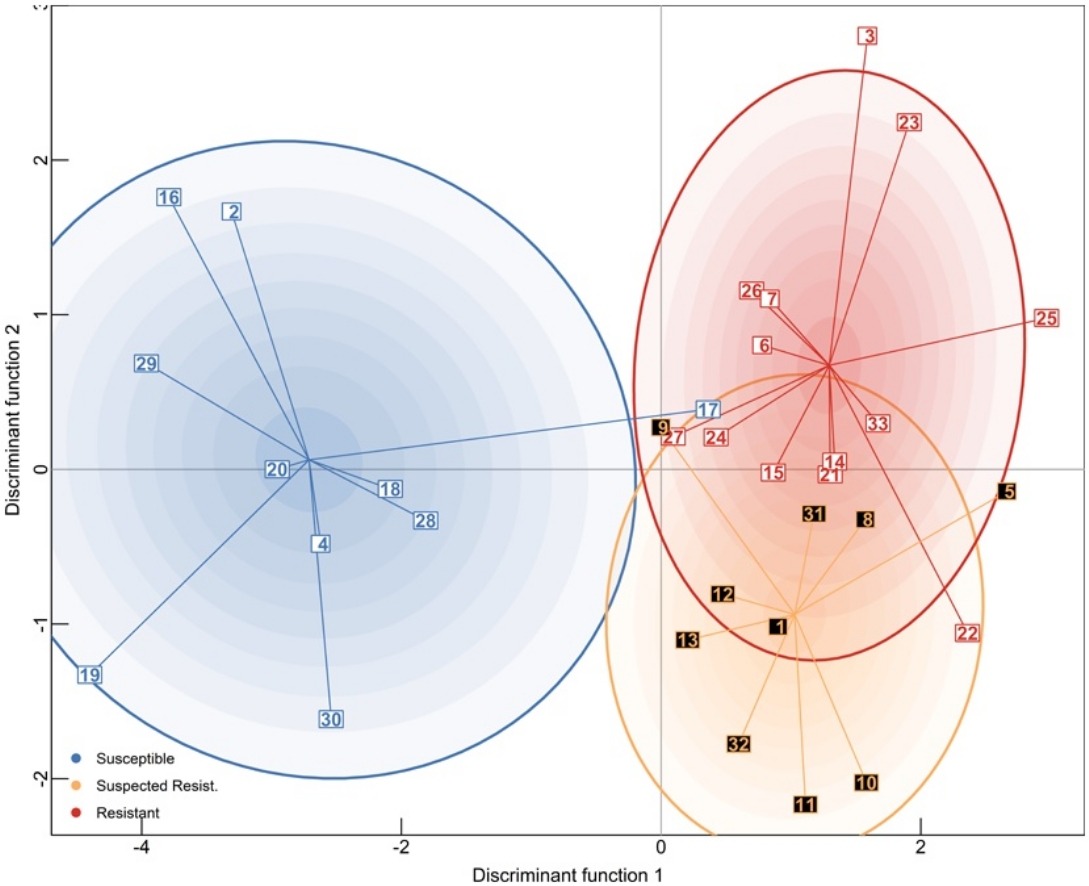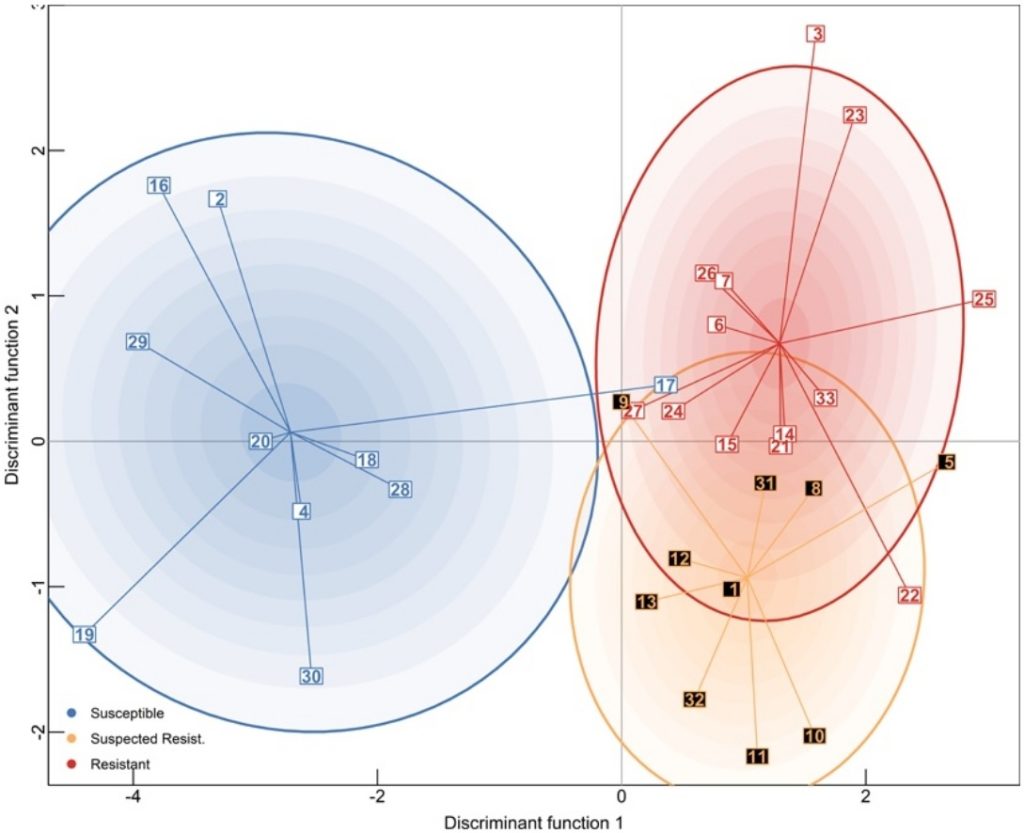Effects of doxycycline dose rate and pre-adulticide wait period on heartworm-associated pathology and adult worm mass
Background: The American Heartworm Society canine guidelines recommend treatment with doxycycline prior to adulticide administration to reduce levels of Wolbachia and its associated metabolites, which are known to be a leading cause of pulmonary pathology. Studies have determined that doxycycline administered at 10 mg/kg BID for 28 days is an effective dose for eliminating Wolbachia, but what has not been determined is the clinical relevance of this elimination. The current guidelines also recommend a 30-day wait period following administration of doxycycline to allow for clearance of metabolites, such as Wolbachia surface protein, and for further reduction in heartworm biomass before administration of adulticide. Reducing the doxycycline dose and eliminating the wait period may carry practical benefits for the animal, client, and practitioner.
Methods: To investigate these treatment practices, Dirofilaria immitis adults were surgically transplanted into each of 45 dogs, which were divided into nine study groups of five dogs each. Seventy-five days after transplantation, two groups each were administered 5, 7.5, or 10 mg/kg BID doxycycline orally for 28 days and 6 µg/kg ivermectin monthly, with three untreated groups serving as controls. Study animals were necropsied and examined prior to treatment as well as 30 and 60 days post-treatment.
Results: Mean worm weight was unaffected by dosage but exhibited a significant increase at 30 days and significant decrease at 60 days post-treatment, including in control groups. Histopathology lesion scores did not significantly differ among groups, with the exception of the lung composite score for one untreated group. Liver enzymes, the levels of which are a concern in doxycycline treatment, were also examined, with no abnormalities in alanine aminotransferase or alkaline phosphatase observed.
Conclusions: No consistent worsening of tissue lesions was observed with or without the AHS-recommended 30-day wait period, nor did reduced dosages of doxycycline lead to worsening of pathology or any change in efficacy in depleting worm weight. Mean worm weight did significantly increase prior to, and decrease following, the wait period. Future work that also includes adulticide treatment (i.e. melarsomine) will study treatment recommendations that may improve both animal health and owner compliance.
Andrew R Moorhead, Christopher C Evans, Kaori Sakamoto, Michael T Dzimianski, Abdelmoneim Mansour, Utami DiCosty, Crystal Fricks, Scott McCall, Ben Carson, C Thomas Nelson, John W McCall. Parasit Vectors. 2023 Jul 25;16(1):251. doi: 10.1186/s13071-023-05858-2.






